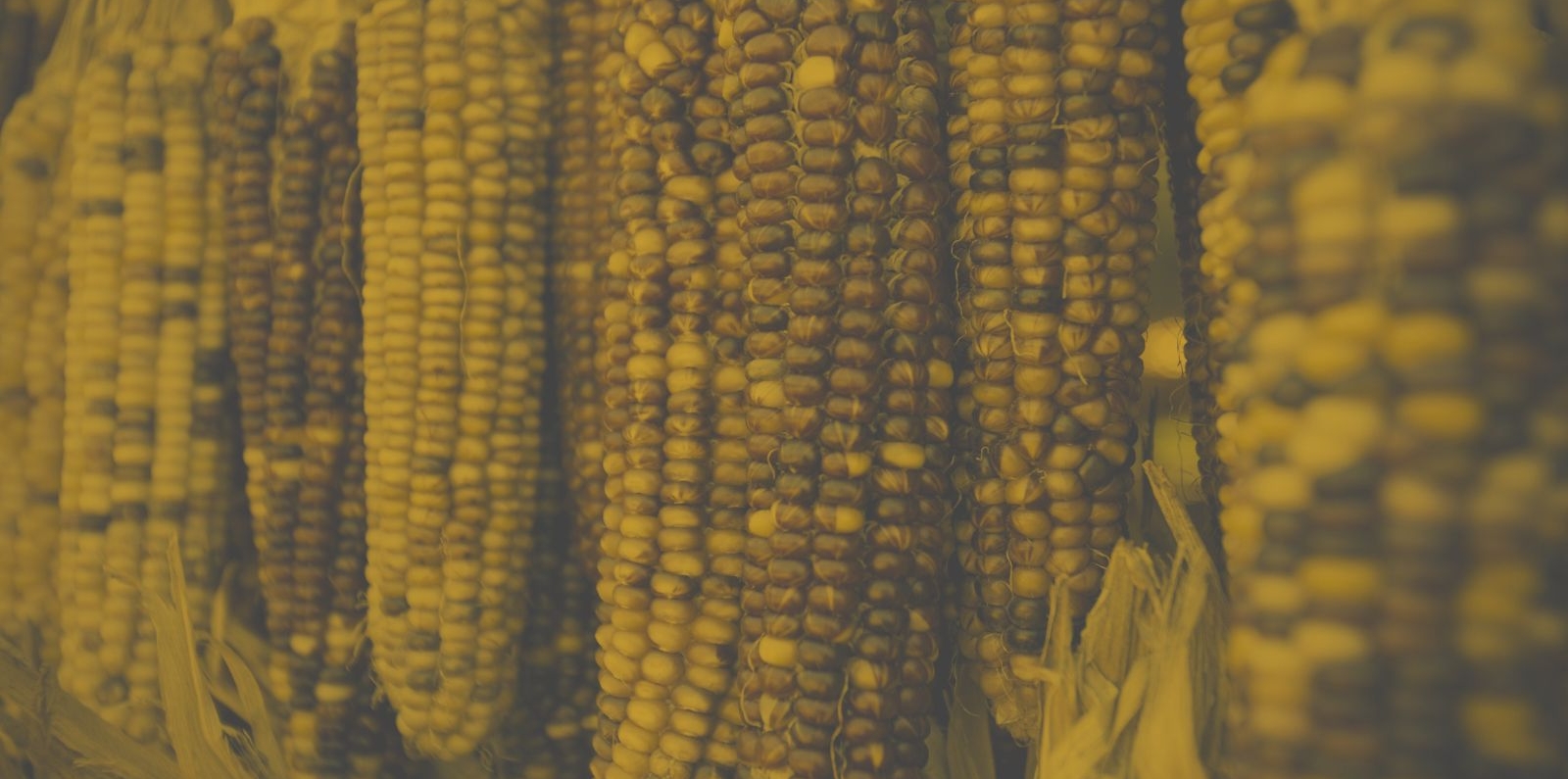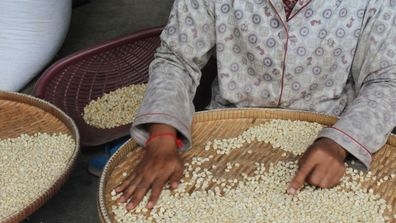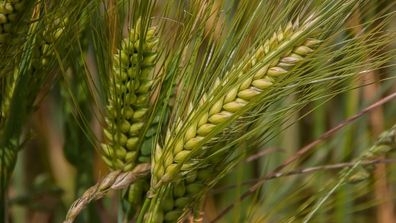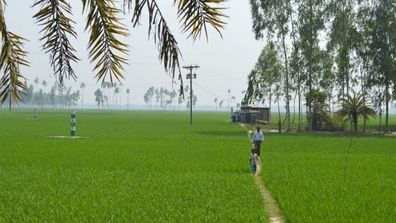A story by Teresa Welsh for Devex
When Natividad Maldonado returned to his native Honduras after 17 years as a migrant in the United States, he was struck by the dramatic shift in the weather patterns he was experiencing on his small family cattle ranch.
Things are much different than during his childhood on his father’s farm in the southern municipality of Mercedes de Oriente. This part of the country is known as the Dry Corridor because it suffers from persistent drought, making it difficult for farmers to harvest enough to feed their families, let alone generate an income from selling on the local or international markets.
Maldonado must grow enough grasses on the steep and arid mountain slopes to keep his cattle healthy and producing enough milk. He also grows corn and beans.

“The varying weather patterns really affect the animals,” said Maldonado, 43, noting that if he doesn’t have enough to feed them, the milk they produce isn’t as nutritious. “Climate change has hurt us a lot.”
Miguel Maldonado, the mayor of Mercedes de Oriente, a small hamlet of about 1,000 people, said most of his constituents rely on agriculture for their livelihoods. Most grow basic grains for their own family’s consumption, while a few also produce enough to export to neighboring countries such as El Salvador.
Ten million people live in the Dry Corridor, which stretches across parts of Costa Rica, El Salvador, Guatemala, Honduras, and Nicaragua. More than half of them are involved in agriculture, with more than 73% of the rural population living in poverty and many suffering from malnutrition. An estimated 7.1 million are severely food insecure, according to the Food and Agriculture Organization.

“Climate change has hurt us a lot.”
— Natividad Maldonado, a cattle rancher in Mercedes de Oriente, Honduras
The stakes are high: Miguel Maldonado said subsistence farming has led to endemic migration from the community, with children as young as 14 years old making the journey to other parts of Honduras and as far as the U.S.
But with support from the World Food Programme, which identifies the Mercedes de Oriente community as one of the most susceptible among the world’s most climate-vulnerable countries, farmers are learning to build resilience to the effects of climate change.
“Before, it was hard for farmers to diversify what they’re growing. But with this type of resilience program, it’s gotten much better,” Miguel Maldonado said. “This project is a way for families to earn more money … In the last few years, migration has gone down.”
Natividad Maldonado and his neighbors have learned a new technique to preserve the grasses his cattle eat, allowing him to store 80 feed bags. They contain grass clippings mixed with molasses and a “flour” made of rock, which provides extra nutrients. Storing the feed ensures his cattle will have enough even if the next growing season fails. In addition to the technical know-how, their local farmer’s association received support to purchase a machine that can shred the grass in higher quantities so farmers can package the feed bags more efficiently.
Farmers struggling in the Dry Corridor are not unique. Producers in different regions of Honduras — whose economy is mostly based on agriculture — told Devex climate change is wreaking havoc on their livelihoods. An inability to know the weather patterns and adjust their planting accordingly makes them extremely vulnerable to the whims of oscillating rain levels and storms, which can wipe out fields and displace families.
It also makes it challenging to coordinate a cohesive response. In some parts of Honduras, the problem is too much water. In others, it’s too little. The government does not have the capacity to help farmers recover, so international organizations step in to respond to emergencies such as hurricanes while also supporting resilience-building programs to give farmers a fighting chance to adapt.
In May, the Honduran government declared a food security emergency through year-end, and in September, another state of emergency was issued in response to risks from torrential rains, flooding, and landslides.
“We don’t have any control,” said farmer Amílcar Antonio Zúñiga, 35, who grows corn, tomatoes, and coffee in the community of El Jícaro in the southern municipality of Oropolí. His fields were flooded in September, but now there is too little rain, and his crops are suffering. “We never know how the rainy season will go.”
The changing weather, along with lingering economic effects of the COVID-19 pandemic, makes Honduras what the humanitarian community refers to as a complex crisis — layers of challenges stacked on top of each other that make it difficult for people to make a sufficient living at home. This has become a large push factor for migration from this region.
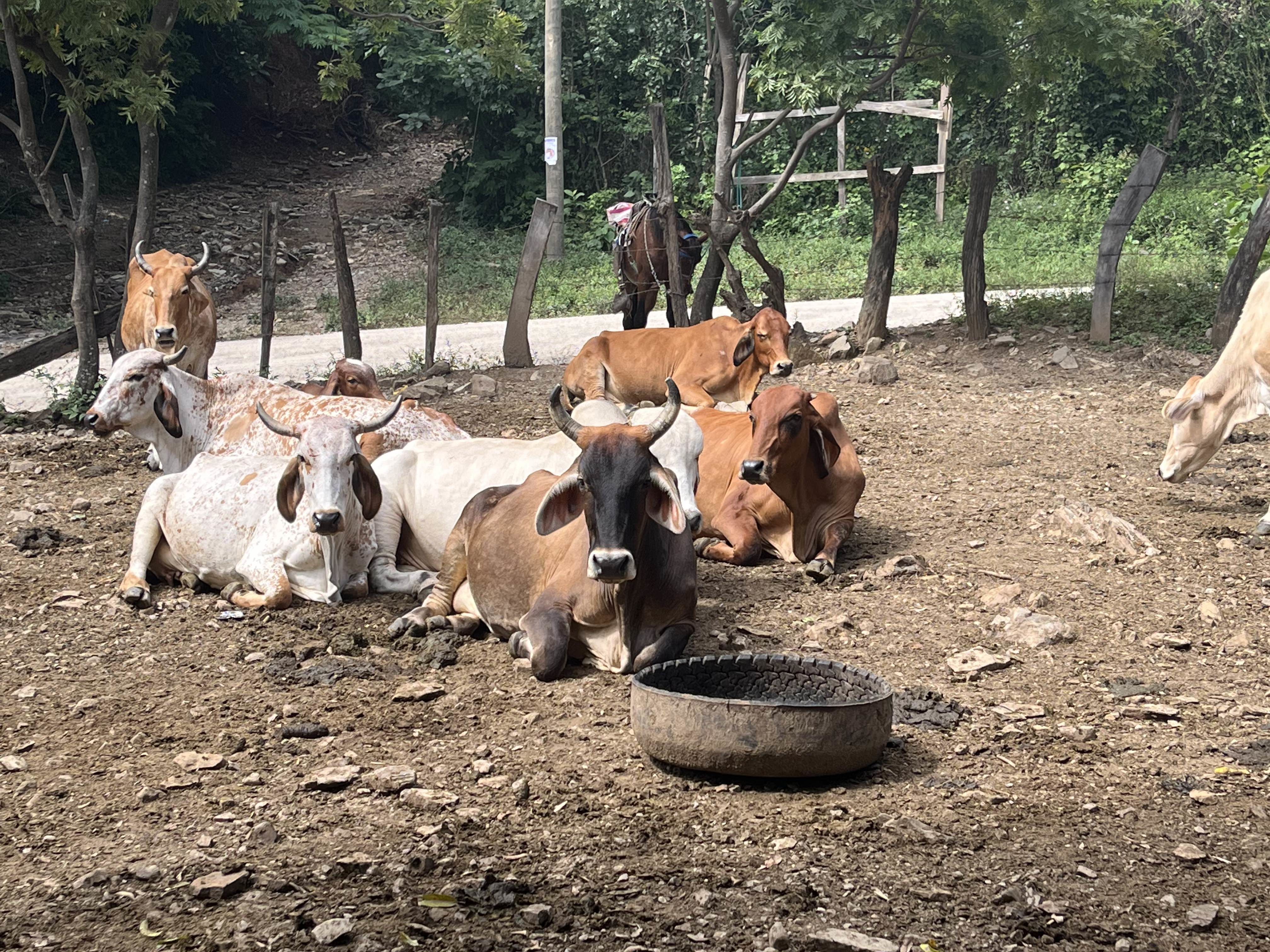
But without images of emaciated children and livestock lying dead in fields, Honduras doesn’t garner international headlines like the drought in the Horn of Africa.
Yet the situation has drastic consequences for the country’s food security. While the last official figures, as of Sept. 9, indicate 2.6 million Hondurans experience moderate or severe food insecurity, WFP country director Stephanie Hochstetter told Devex the real figure is now likely 3.1 million, based on WFP and FAO estimates.
“You want to help a farmer that has nothing to eat in Valle de Sula. And you can’t, aside from providing food. Why? Because his soil, the land, is under water.”
— Stephanie Hochstetter, World Food Programme country director for Honduras
“Our fear is that the climate events that have happened since June — first with [Hurricane] Ian, then Julia — are going to have an effect, not only because … they’re already food insecure, but also these climatic changes,” Hoschstetter said.
“It’s not your regular weather patterns, so people don’t actually know when to plant, when to harvest.”
Honduras recently began importing beans, a major dietary staple regularly grown in abundance nationwide, because rains from Tropical Storm Julia damaged the crops — a sign of how dire the domestic growing situation has become.
Diversification — of both income streams and crops — is a main strategy pursued by international development programs in Honduras to help people adapt to climate change and build resilience.
The peaks of neighboring El Salvador are visible from Mercedes de Oriente, a rural mountainside community where homes are dotted along a mostly rocky dirt road residents traverse on motorcycles and mules, although portions are paved. WFP supports the local rural women’s savings group, which raises chickens.
They earn income selling eggs, which also provide extra nutrition for a community that previously had a few backyard chickens and no eggs for sale. They also run a bakery, selling bread that supplements household income and creates a buffer during years when agricultural yields and profits are down.
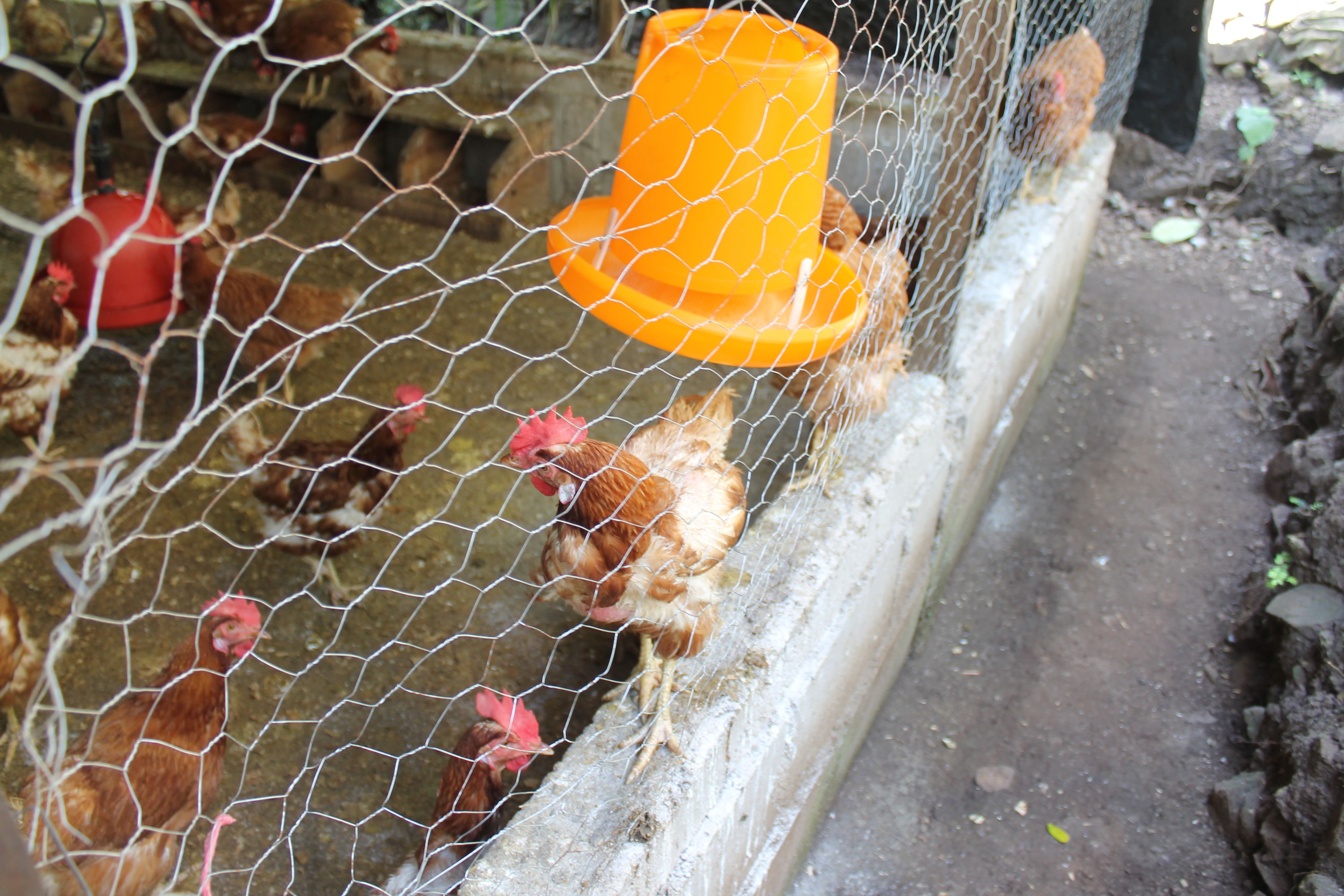
As chickens squawked in the background, Susana Turcios, 46, said her husband has had several difficult years growing beans and corn because of Hurricanes Eta and Iota, which hit in 2020. The crops were so damaged they couldn’t put enough food on the table.
“He lost everything. Everything,” she said somberly.
“Last year was also bad. There’s less water, and you wait, but nothing comes,” Turcios said, noting that the climate in the Dry Corridor also makes it challenging to grow vegetables and even rice. “We only grow the basics. If you want rice, you have to go buy it.”
More than 200 kilometers (124 miles) from the Dry Corridor, farmers in the western department of Lempira also find themselves at the mercy of the rains that flood their fields.
An FAO program there focuses on helping farmers adapt to climate change through a comprehensive set of activities, including supporting honey production while encouraging reforestation, which is key to limiting the damaging effects of carbon being released into the atmosphere.
“The objective of all of these activities is to adapt communities to these extreme temperature changes and so they have the possibility of food security,” said Amy Lazo, an FAO forestry specialist. “But also to increase the forest cover, which is one way to fight global warming.”
The farmers have learned how vital it is to protect the trees, so there are enough flowers for the bees, which in turn can provide abundant honey production.
“We tell people to try not to cut them,” said Giovanni Reyes, 35, part of an association of honey producers receiving support from FAO in the coffee-growing community of El Cile, “Working as a farmer is not only being in the field, but playing a role in the community.”
The honey brings in cash and also supplies much-needed nutrition for the population, which cuts out more nutritious foods such as fruits and vegetables in favor of beans, eggs, and tortillas when food prices go up, Reyes said.
Mid-size farms often have access to more technology, allowing them to weather poor growing seasons. In the dry parts of the country, an irrigation system can be the difference between a salvaged growing season and one that is completely lost.
Marvin Giovanni Suniga, 30, in the eastern department of El Paraiso, grows tomatoes, beans, and corn in his 15 manzanas of land — a Central American measurement whose exact size varies from country to country, but in Honduras is less than 2 acres (0.8 hectares). He built his irrigation system using credit from a program called AgroMoney, supported by the Global Agriculture and Food Security Program. It helps shield him against erratic rain patterns.
AgroMoney provides microcredits in the form of key farming inputs such as fertilizer, seeds, and irrigation technology like Suniga’s. It also gives technical support to help farmers understand and adopt new practices that could help them even as the weather patterns change.
Financial support to farmers with few places to turn when yields don’t meet expectations is essential, as inflation in Honduras is estimated to reach 12% by the end of the year. Vital farming inputs such as fertilizers, pesticides, and seeds are highly affected by inflation, hitting already struggling rural families who rely on farming for their livelihoods.
“It’s super expensive,” Suniga said, noting that the war in Ukraine has affected the price of a sack of fertilizer. “It’s a little more than double the price, almost triple” from a year ago. This reduces how much he can earn, he said.
“It’s not your regular weather patterns, so people don’t actually know when to plant, when to harvest.”
— Stephanie Hochstetter, World Food Programme country director for Honduras
AgroMoney allows farmers — who often have no bank account or access to formal credit, leaving them extremely vulnerable when shocks disrupt income flows — to pay back their loans at competitive rates, use funds to increase resilience, and expand production.
For some, the availability of water is pure luck: Suniga’s family’s land happens to include access to a river from which water can be pumped to the fields.
In other parts of the country, water has become a curse.
The Honduran government’s weak ability to respond has left families affected by hurricanes Eta and Iota two years ago still struggling to recover, with some unable to restore their livelihoods after the storms destroyed their land with heavy rains and landslides. Fields are still flooded from rains caused by Hurricane Julia, which battered the area early last month.
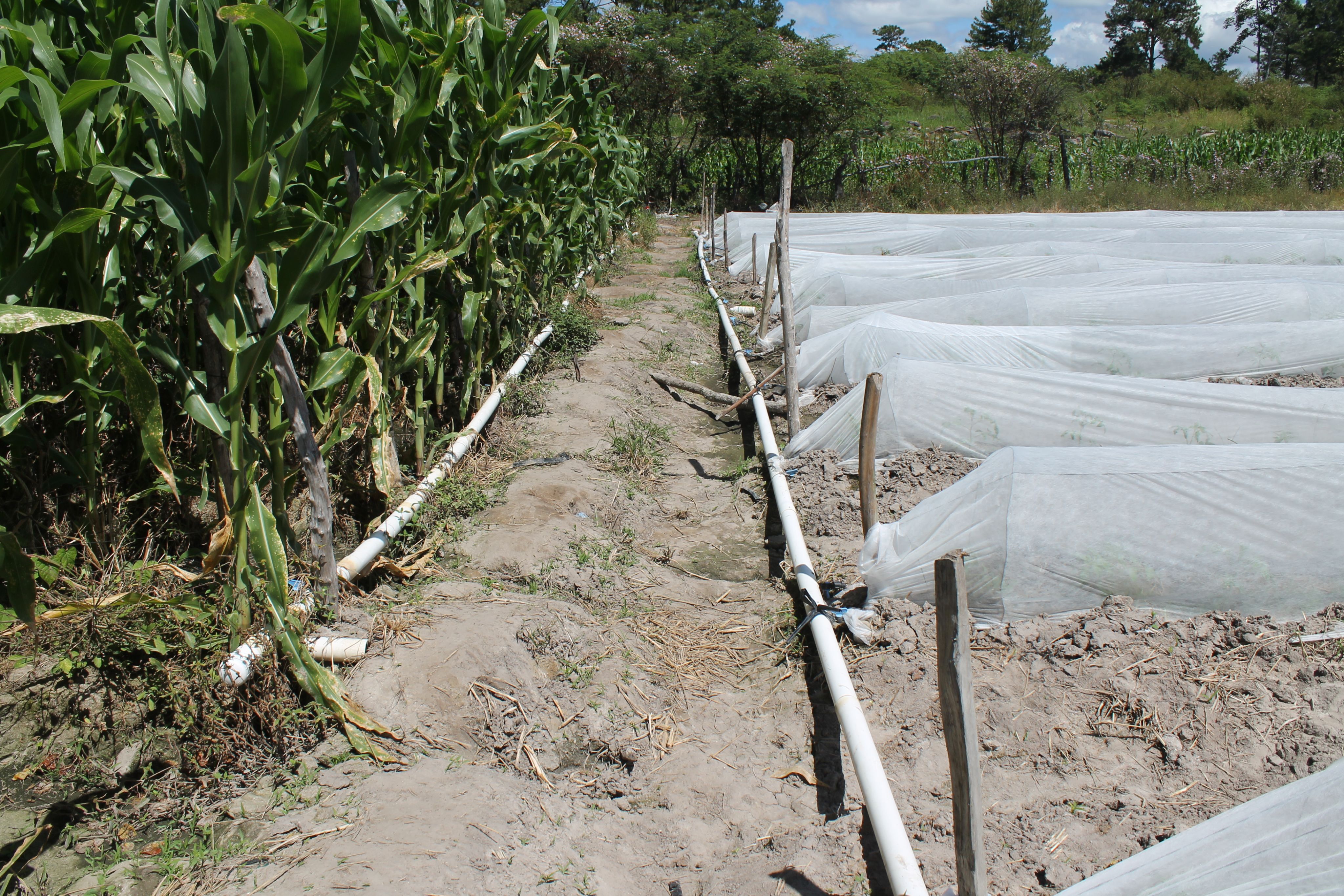
WFP’s Hochstetter laid the blame for Honduras’ food insecurity, which hit the northern department of Valle de Sula particularly hard, squarely at the feet of climate change.
“You want to help a farmer that has nothing to eat in Valle de Sula. And you can’t, aside from providing food. Why? Because his soil, the land, is under water,” Hochstetter said. “Even if we wanted to give seeds and fertilizer and we had everything to make him be able to recover his livelihood, he just can’t do it.”
Photos by: Teresa Welsh
Produced by: Janelle Cruz
